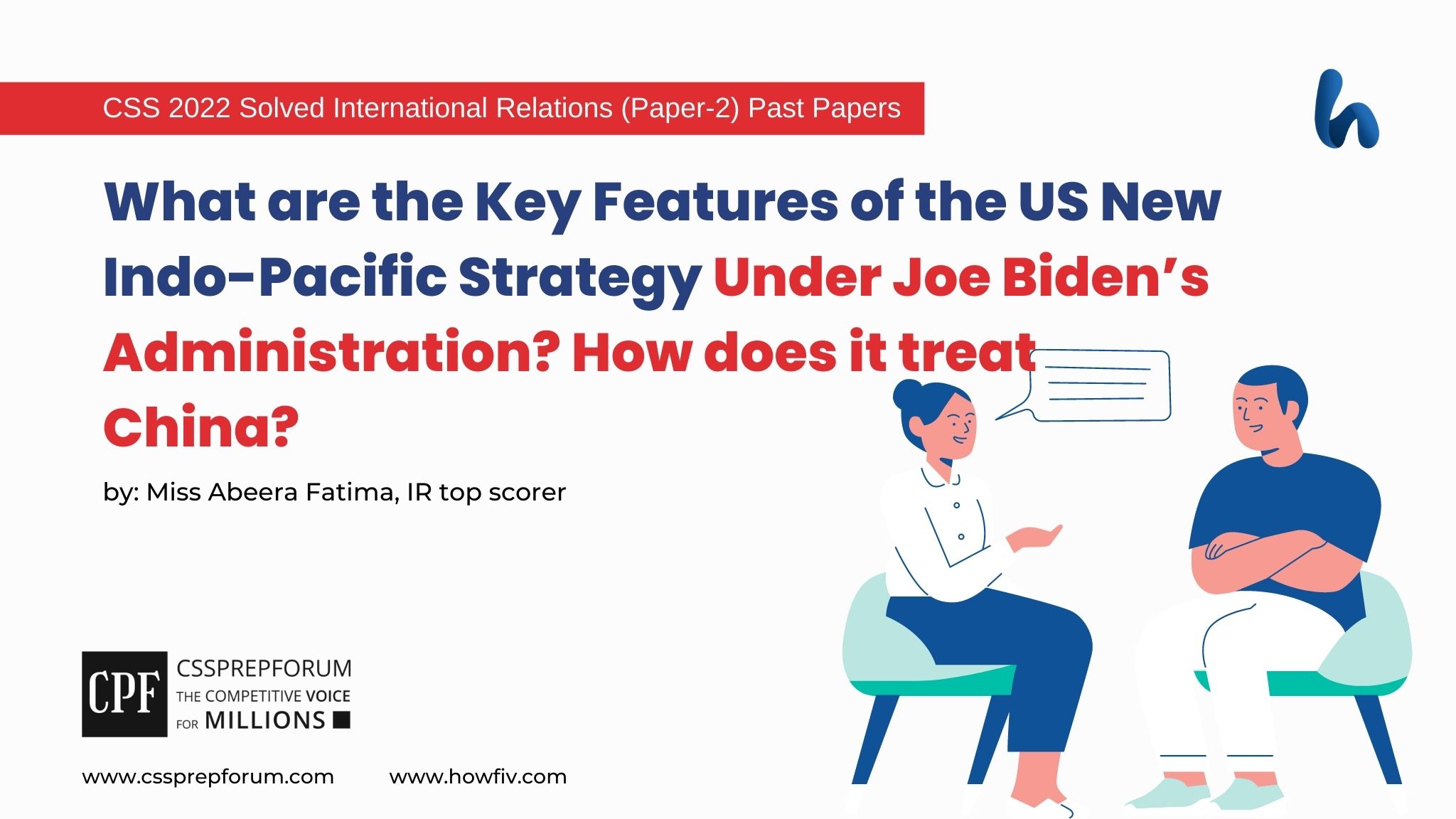Q2. What are the key features of the US new Indo-Pacific strategy under Joe Biden’s administration? How does it treat China?

The US Indo-Pacific strategy under the Biden administration is aimed at promoting a free and open Indo-Pacific region, ensuring stability, and advancing American interests and values in the region. While the strategy emphasizes continuity with the previous administrations, it also introduces some changes and adjustments. Here are some key features:
- Engagement and Multilateralism: The Biden administration seeks to engage with regional partners and allies in the Indo-Pacific through multilateral frameworks, such as the Quad (Quadrilateral Security Dialogue) involving the US, Japan, India, and Australia, as well as ASEAN (Association of Southeast Asian Nations).
- Strengthening Alliances and Partnerships: The strategy emphasizes the importance of strengthening existing alliances and partnerships, such as the US-Japan alliance and US-Australia alliance, as well as building new partnerships with countries in the region.
- Security and Defense Cooperation: The US aims to enhance security and defense cooperation with its allies and partners in the Indo-Pacific region. This includes increasing military presence, conducting joint exercises, and enhancing capabilities to address shared challenges like maritime security, counterterrorism, and non-proliferation.
- Economic Engagement: The strategy recognizes the economic importance of the Indo-Pacific region and aims to promote economic engagement through trade, investment, and infrastructure development. The Biden administration has also expressed interest in rejoining the Comprehensive and Progressive Agreement for Trans-Pacific Partnership (CPTPP), a trade agreement involving several countries in the region.
Regarding China, the Biden administration’s approach to China is characterized by a combination of competition, cooperation, and confrontation. While it acknowledges the need for cooperation with China on certain global issues like climate change and non-proliferation, it also recognizes China as a strategic competitor that poses challenges to US interests.
The Biden administration has emphasized the importance of working with allies and partners to counter China’s assertive behavior in areas such as trade practices, intellectual property theft, human rights issues, and regional security. It has also expressed concerns about China’s military activities in the South China Sea and its influence operations in the region.
Overall, the US Indo-Pacific strategy under the Biden administration aims to strike a balance between engagement and competition with China while reinforcing alliances, promoting regional stability, and upholding a rules-based international order in the Indo-Pacific region. It is important to note that specific policy decisions and developments since my knowledge cutoff might have further shaped the US approach to the Indo-Pacific and China.